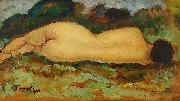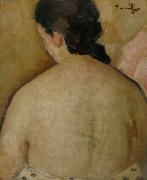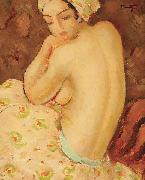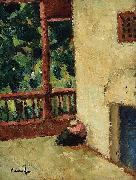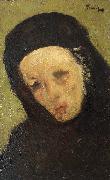|
||||||||||
|
|
||||||||||
|
Nicolae Tonitza Pintura Identificación:: 77954 Vea nuestra galería en Suecia |
Nicolae Tonitza Nud întins, ulei pe carton subțire, 20x34 cm, semnat stânga jos, cu brun, Tonitza. cyf Nud_întins,_ulei_pe_carton_subțire,_20x34_cm,_semnat_stânga_jos,_cu_brun,_Tonitza. cyf |
|||||||||
|
|
||||||||||
|
Tors vazut din spate Pintura Identificación:: 78166 Vea nuestra galería en Suecia |
Tors vazut din spate ulei pe carton, semnat dreapta sus, 39,5x49 cm. Date n/a cyf ulei_pe_carton,_semnat_dreapta_sus,_39,5x49_cm._ Date_n/a _ cyf |
|||||||||
|
|
||||||||||
|
Afize, ulei pe carton Pintura Identificación:: 78314 Vea nuestra galería en Suecia |
Afize, ulei pe carton Nicolae Tonitza - Afizx, ulei pe carton, 50 x 41,5 cm, semnat dreapta sus, cu brun, Tonitza. cjr Nicolae_Tonitza_-_Afizx,_ulei_pe_carton,_50_x_41,5_cm,_semnat_dreapta_sus,_cu_brun,_Tonitza. cjr |
|||||||||
|
|
||||||||||
|
Tataroaica in cerdac Pintura Identificación:: 78375 Vea nuestra galería en Suecia |
Tataroaica in cerdac , 40x30 cm, semnat dreapta jos, cu brun, Tonitza . cyf ,_40x30_cm,_semnat_dreapta_jos,_cu_brun,_Tonitza . cyf |
|||||||||
|
|
||||||||||
|
Indurerata Pintura Identificación:: 78377 Vea nuestra galería en Suecia |
Indurerata Nicolae Tonitza (1886 - 1940) - Îndurerata, ulei pe carton. Date n/a cyf Nicolae_Tonitza_(1886_-_1940)_-_Îndurerata,_ulei_pe_carton._ Date_n/a _ cyf |
|||||||||
|
|
||||||||||
| Artista Previo Próximo Artista | ||||||||||
|
|
||||||||||
| Nicolae Tonitza | ||||||||||
| (Romanian pronunciation: [nikoˈla.e toˈnit͡sa]; April 13, 1886 - February 27, 1940) was a Romanian painter, engraver, lithographer, journalist and art critic. Drawing inspiration from Post-impressionism and Expressionism, he had a major role in introducing modernist guidelines to local art. Born in Bârlad, he left his home town in 1902 in order to attend the Iaşi National School of Fine Arts, where he had among his teachers Gheorghe Popovici and Emanoil Bardasare.The following year he visited Italy together with University of Bucharest students of archeology under the direction of Grigore Tocilescu.During that period, together with some of his fellow students, Tonitza painted the walls of Grozeşti church. In 1908 he left for Munich, where he attended the Royal Academy of Fine Arts; he began publishing political cartoons in Furnica, and contributing art criticism articles to Arta Română. Tonitza spent the following three years in Paris, where he visited artists' studios, and studied famous paintings.Although the young artist's creation would initially conform to the prevalent style, his gift for colour and his personal touch would eventually lead him towards experiment.Throughout his life, he remained committed to the Munich School, hailing its innovative style over the supposedly "obscure imitators of Matisse". | ||||||||||
|
|
||||||||||
IntoFineArt Co,.Ltd.








